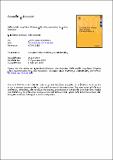Files in this item
Randomized low-rank Dynamic Mode Decomposition for motion detection
Item metadata
| dc.contributor.author | Erichson, Nils Benjamin | |
| dc.contributor.author | Donovan, Carl Robert | |
| dc.date.accessioned | 2017-02-13T00:32:40Z | |
| dc.date.available | 2017-02-13T00:32:40Z | |
| dc.date.issued | 2016-05 | |
| dc.identifier | 241020394 | |
| dc.identifier | 083c43ad-3499-41c3-ae32-b965eb75a6fd | |
| dc.identifier | 84959450462 | |
| dc.identifier | 000374430200004 | |
| dc.identifier.citation | Erichson , N B & Donovan , C R 2016 , ' Randomized low-rank Dynamic Mode Decomposition for motion detection ' , Computer Vision and Image Understanding , vol. 146 , pp. 40-50 . https://doi.org/10.1016/j.cviu.2016.02.005 | en |
| dc.identifier.issn | 1077-3142 | |
| dc.identifier.other | RIS: urn:E5856BD20AE194804E9E12DBDBB99D6B | |
| dc.identifier.other | ORCID: /0000-0002-1465-5193/work/68647698 | |
| dc.identifier.uri | https://hdl.handle.net/10023/10273 | |
| dc.description | N. Benjamin Erichson acknowledges support from the UK Engineering and Physical Sciences Research Council (EPSRC). | en |
| dc.description.abstract | This paper introduces a fast algorithm for randomized computation of a low-rank Dynamic Mode Decomposition (DMD) of a matrix. Here we consider this matrix to represent the development of a spatial grid through time e.g. data from a static video source. DMD was originally introduced in the fluid mechanics community, but is also suitable for motion detection in video streams and its use for background subtraction has received little previous investigation. In this study we present a comprehensive evaluation of background subtraction, using the randomized DMD and compare the results with leading robust principal component analysis algorithms. The results are convincing and show the random DMD is an efficient and powerful approach for background modeling, allowing processing of high resolution videos in real-time. Supplementary materials include implementations of the algorithms in Python. | |
| dc.format.extent | 1459464 | |
| dc.language.iso | eng | |
| dc.relation.ispartof | Computer Vision and Image Understanding | en |
| dc.subject | Dynamic Mode Decomposition | en |
| dc.subject | Robust principal component analysis | en |
| dc.subject | Randomized singular value decomposition | en |
| dc.subject | Motion detection | en |
| dc.subject | Background subtraction | en |
| dc.subject | Video surveillance | en |
| dc.subject | QA75 Electronic computers. Computer science | en |
| dc.subject | DAS | en |
| dc.subject | BDC | en |
| dc.subject | R2C | en |
| dc.subject.lcc | QA75 | en |
| dc.title | Randomized low-rank Dynamic Mode Decomposition for motion detection | en |
| dc.type | Journal article | en |
| dc.contributor.institution | University of St Andrews. School of Mathematics and Statistics | en |
| dc.identifier.doi | 10.1016/j.cviu.2016.02.005 | |
| dc.description.status | Peer reviewed | en |
| dc.date.embargoedUntil | 2017-02-12 |
This item appears in the following Collection(s)
Items in the St Andrews Research Repository are protected by copyright, with all rights reserved, unless otherwise indicated.

